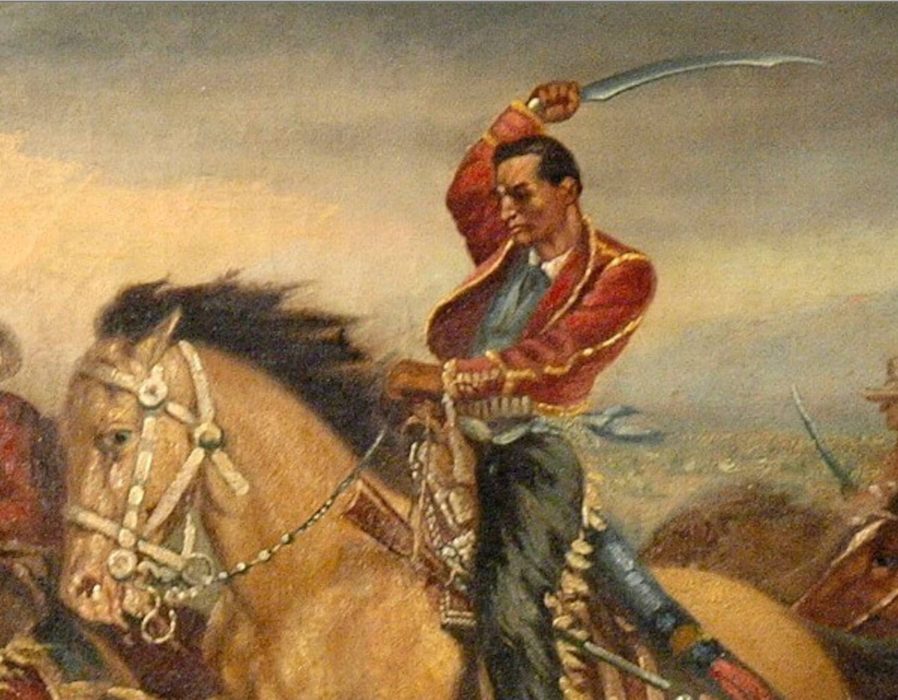SOFT SUBVERSIONS 8. Fight like los chinacos
 •
by
•
by Pfenix Quinn

Los Chinacos were guerrillas, or if you prefer, partisans, who fought against North American troops in the Intervention War of 1847 and against the French invasion forces in the War of 1864. Not to be confused with charros (“horsemen” or “cowboys”) or chicanos (Mexican-Americans in the USA), the term chinaco was originally something of a derogatory term used by rich Spanish colonists to refer to servants of mixed indigenous and African heritage. It evolved from an earlier arrogant mis-use of language during the viceroyalty, by which servants were referred to as chinas and chinos (“Chinese”) in much that same way that European colonizers referred to all the various indigenous people of the Americas as “Indians”.
It is also thought that the term, as it was later applied to the guerrilla forces, may have had a resonance with the Nahuatl word tzinacan, which means bat, because Los Chinacos commonly attacked the enemy at night and during the day hid in secret caves.

Chinacos were horsemen from the small villages, from the deep countryside. They typically wore broad-brimmed hats, a blanket over a pair of suede trousers, a wide waistband, a short jacket with external shoulder pads, and a bandana completely covering the head, tied in the back and a serape against the cold. Their traditional everyday accoutrements were rope and a spear. As they became more of a military force, a machete became their trademark weapon.
They were the peoples’ warriors, men of the people.
The chinacos first appeared as irregulars with the insurgents who rose up against the Spanish royalists in 1810, during the War of Independence. Their get-up was adopted by some insurgent leaders who were not mostly of indigenous heritage because it was comfortable, beautiful and clearly distinguished a fighter as patriot who had rejected the culture of the colonialists and occupiers.
Chinaco forces were recognized during the resistance against the North American intervention from 1846 to 1848 that robbed Mexico of half its territory, and again in the civil war, the Reform War of 1857-1861, where many sided with the Liberal forces of Benito Juarez against the Conservative militarists funded by the clerical mafia, although some fought on the Conservative side as well.
But it was their resistance, alongside the regular Mexican Army, to the invading and occupying French troops of Napoleon III, who had imposed Hapsburg rule in Mexico, for which los Chinacos are best remembered. A famous tactic was to lasso ropes from two riders around a chair and charge into the enemy lines at full speed, avoiding rifle shot and knocking down whole ranks of Frenchies in the process.
They were known for giving no quarter during combat, but being generous to vanquished soldiers. They would often ride long distances at night in order to surprise the enemy, forcing the French into a state of constant alarm.
A populist newspaper called La Chinaca, started up in 1862, popularized the “March of the Chinaca” with lines like “Their anger is only appeased by killing the invaders. Let there be no give and take.”
In the famous battle of Puebla on the 5th of May, 1862, a band of “men who were mounted and armed” was acclaimed for their “aptitude, patriotism and honor”.

After 1870, as industrialization began to take hold, the famous irregular horsemen began to fade away and the national defense took on more and more the character of European and North American armies, with their machine guns and so on. The tradition held on for some time in the old revolutionary bastion of Michoacán where the chinaco tradition evolved into that of the cuerudos, who wore deer hide costumes to protect them from the cold of the mountains. The cuerudos were active up through the Mexican Revolution of 1910-1917.
The heroism of the chinacos is remembered in statues, memorials, plaques and so on in many parts of Mexico, as well as in song and in the names of restaurants, brands and so on in Mexican and Mexican-American communities throughout the Americas.


Comments
"Every great dream begins with a dreamer. Always remember, you have within you the strength, the patience, and the passion to reach for the stars to change the world." -- Harriet Tubman
Wonderful and revolutionary as always! o>
Should have written about the Fillibuster War. That was a much more interesting conflict around the same time. Not that many people actually know about it.
Thanks for the tip. Will read up on it.
When the American from Tennessee, Walker, made himself Emperor. [had the support of United Fruit Company].
Interesting!
V!!
o7
07
Very interesting read.
Dare, I say it was a nice read.
RL masters of the RW......have more determination than one can measure
Horror
...Like potetos, kimchi, burger, etc
...
Mr. Williams, you have too much talent for telling beautiful stories... should publish a RL series.